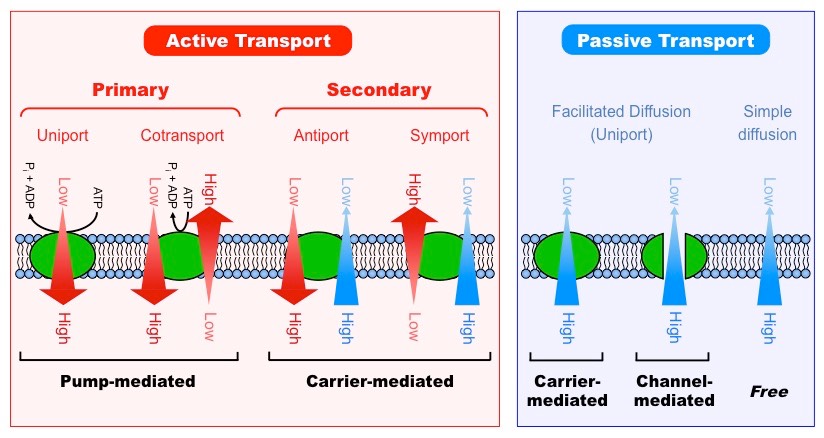![]()
Understanding:
• Particles move across membranes by simple diffusion, facilitated diffusion, osmosis and active transport
Cellular membranes possess two key qualities:
- They are semi-permeable (only certain materials may freely cross – large and charged substances are typically blocked)
- They are selective (membrane proteins may regulate the passage of material that cannot freely cross)
Movement of materials across a biological membrane may occur either actively or passively
Passive Transport
Passive transport involves the movement of material along a concentration gradient (high concentration ⇒ low concentration)
Because materials are moving down a concentration gradient, it does not require the expenditure of energy (ATP hydrolysis)
There are three main types of passive transport:
- Simple diffusion – movement of small or lipophilic molecules (e.g. O2, CO2, etc.)
- Osmosis – movement of water molecules (dependent on solute concentrations)
- Facilitated diffusion – movement of large or charged molecules via membrane proteins (e.g. ions, sucrose, etc.)
Active Transport
Active transport involves the movement of materials against a concentration gradient (low concentration ⇒ high concentration)
Because materials are moving against the gradient, it requires the expenditure of energy (e.g. ATP hydrolysis)
There are two main types of active transport:
- Primary (direct) active transport – Involves the direct use of metabolic energy (e.g. ATP hydrolysis) to mediate transport
- Secondary (indirect) active transport – Involves coupling the molecule with another moving along an electrochemical gradient
Types of Membrane Transport

